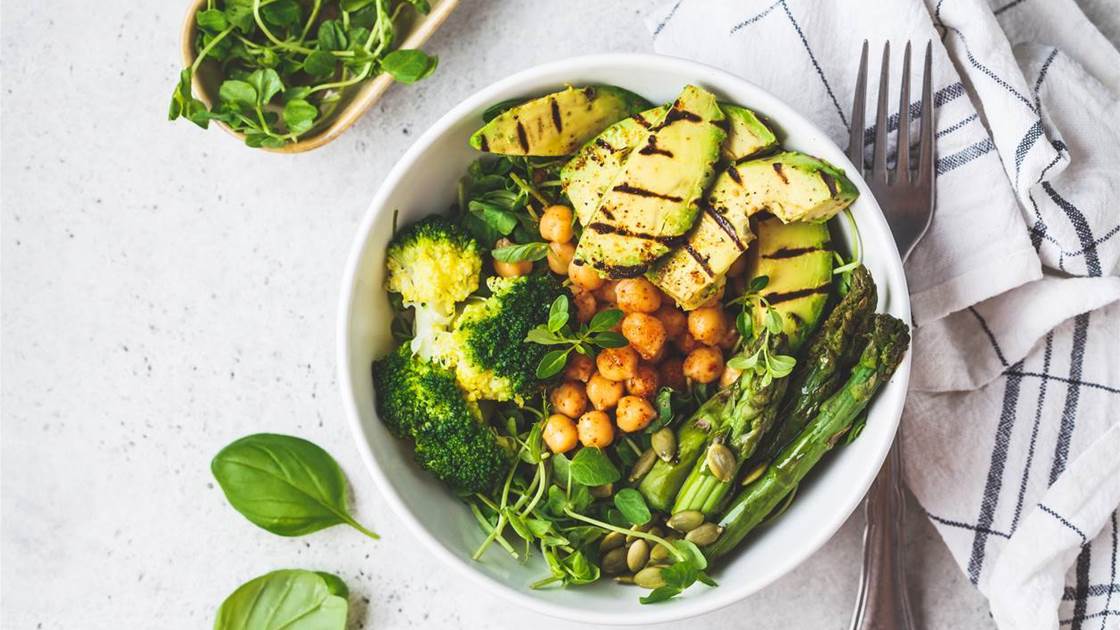Here are 12 clever ways to keep weight off for good (no more yo-yo dieting!). A new slimmer, more energised version of you is just a short read away, so get cracking!
1. Tweak a single meal
The first step is to pick a specific point in your day to dive in and start making gradual changes. It could even be breakfast: get rid of sweetened cereal or that fancy pastry you pick up from the cafe each morning. Instead, try having wholegrain toast with peanut butter. Build from there – but take your time. “If you take a year to make these changes, you can look back 20 or 30 years later and say, ‘Yeah, that was a tough year, but I feel so much better now,’” says nutritionist Joshua Nachman.
2. Get familiar with ingredients
You probably already scan nutrition panels for the kilojoule count, but chances are you don’t tend to take a good look at a food’s ingredient list. This info can teach you much more about a product (and whether it fits your new healthy lifestyle) than its nutrition stats can, says dietitian Nicole Silber. She recommends sticking to foods with no more than five ingredients. You should also understand that ingredients are listed in order from the highest to lowest amounts. For example, if sugar is the first ingredient, it’s a high-sugar food. Similarly, if the ‘healthy’ ingredients touted on the front of the pack are listed last, then you’re not getting much of it. All the more reason to always look at your ingredient list in conjunction with the nutrition panel.
3. Clean out your pantry
Open up those kitchen cabinets – yes, the place where you’ve stashed a bag of cheesy corn chips. As much as it hurts to throw away food you’ve spent hard-earned cash on, Silber says it’ll help you out in the long run. Go through your pantry and fridge with the same smart, clean-minded eye you’ll use at the grocery store. Anything you would’ve left on the shelf goes in the bin or to a food charity.
4. Learn more about sugar
Sugar is probably one of the biggest roadblocks when it comes to eating healthily. Everything from tomato sauce to stir-in meal flavourings, salad dressing, and ‘healthy’ yoghurts are loaded with refined sugar. Find the grams of sugar on a nutrition label and divide it by four. That’s how many teaspoons are in a serving. Anything with more than two teaspoons per serving should stay on the shelf.
5. Eat organic as much as possible
While you don’t have to eat strictly organic, buying organic foods (or from small-scale, local farmers, and producers who you know don’t use chemicals) whenever possible is a good idea. In a study published in the British Journal of Nutrition, researchers, after reviewing 343 studies, concluded that organically grown crops contained higher levels of antioxidants, likely because they’ve been grown in more nutrient-rich soil. So, the extra cost of eating organic is well worth it!
6. Work (or walk) through cravings
“One of the easiest things to do when you have a craving is to go outside,” says Nachman. As anyone who’s ever eaten an entire packet of biscuits while hunched over a work project knows, cravings are often a result of stress. So instead of giving in, take that walk. If it doesn’t work, reach for a handful of nuts (just one!) or another filling, nutrient-dense snack. Eventually, you’ll find yourself having fewer cravings, and when you do give in, you might not even enjoy the junk foods you once loved. Take Silber, for example, who gave up sweet tea and soft drinks in her own switch to a healthier lifestyle many years ago and now finds she can’t even tolerate sweetened drinks anymore. “When I did try a soft drink a while after I stopped drinking it, it was just too sweet for me,” she says.
7. Focus on what you’re adding in, not what you’re cutting out
OK, so you’ve done some purging in your pantry and fridge – a miserable task you’ll only have to do occasionally. Now comes the fun part: filling your kitchen back up with satisfying, delicious, and nutritious food. As you begin your healthy-eating journey, you’ll want to stock up on a variety of fruits and vegetables, whole grains, nuts and seeds, lean proteins, and healthy fats. These will be the pillars of your new eating plan. See over the page for more.
8. Don’t throw healthy eating out the window when you’re with friends
The bane of any healthy eater’s existence is a night out with friends who order every fried thing in existence. But going out to eat doesn’t have to mean abandoning your nutrition-loving ways, as many menus have healthier options. Sometimes this might mean picking the better-for-you option over the ideally perfect one. To make the right choice, Nachman suggests easing yourself into a decision. “Rather than picking up the menu immediately, first settle in, talk to your friends and relax,” he says. “When you’re in a more calm state and checking in with your body, you can figure out what your stomach is actually craving.”
9. Pack dinner for lunch
Healthy eating typically means making the most of your own meals. No more hitting up the local takeaway for lunch every day! But preparing lunch daily can be daunting and time-consuming. Nachman’s solution: Just make more dinner. “Using leftovers is an easy way to start bringing your own lunch,” he says. “Soups and stews are especially easy to make in large batches.” Struggling with portion control? “Get a bento box [Japanese-style lunch box] and fill two of the containers with greens and a larger space with chicken, fish, or another lean protein.”
10. Don’t deprive yourself
This one’s important. Most nutrition experts will tell you that the only way you’ll be successful in your new eating approach is if you’re happy with what you’re eating. So if there’s one junky food that brings you such immense joy that you can’t picture life without it, keep eating it. Say what? A little junk here and there isn’t going to kill you and shouldn’t derail an otherwise healthy lifestyle. “Have no guilt,” says internal medicine specialist Dr. Jacob Teitelbaum. “If you feel guilty, you’re going to inhale it before you taste it, and then you’re going to reach for more. Take a small portion, walk away, and savour it.”
11. Let somebody else do the work
If your budget allows it, then ordering from an online meal delivery service, such as HelloFresh or Marley Spoon, can help expand your repertoire of healthy, tasty meals. They’ll bring you fresh ingredients, all in pre-measured portions, along with recipe cards for dishes you’ve pre-selected from them online at the start of the week. As a bonus, servings are usually generous, so you’ll often find there are enough leftovers for lunch.
12. Stop counting kilojoules/calories
The reason? It’s unnecessary and even counterproductive. Remember, healthy eating isn’t a diet. As you start to cut out the junk and embrace truly nourishing foods, you’ll get better in tune with your body and understand how much you need certain foods to feel satisfied, energised and healthy – in other words, you’ll naturally self-regulate. Counting kilojoules or calories, on the other hand, has you focusing on a number, and often results in you feeling guilty when you don’t clock in where you should at the end of the day.









